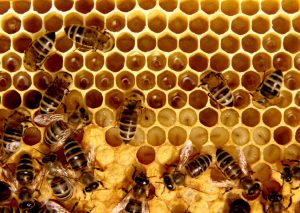Five Tips for Bee Control on Your Property

Bee control is increasingly becoming a problem in especially in a census-designated place like Kendall. Although bees are the most significant pollinators of the ecosystem, they pose high risks to your family and pets. Kendall bee removal services might be a little costly for you, so you might want to prevent bee problems earlier. However, you must also learn how to get rid of bees if they are already infesting your home. Below are five essential tips on how to control bees on your property:
-
Know Your Bees
You must first distinguish what type of bees you are dealing with to know how to get rid of them. Bees vary in aggressiveness. You can often see carpenter, bumble or honey bees around your home. You might think that carpenter bee is a bumblebee, as they are similar in appearance. Getting rid of carpenter bees may not be the same as getting rid of bumblebees.
-
Know if You Truly have a Bee Problem
Seeing a bee does not mean that you have a bee problem. For instance, honey bees always send out scout bees first to search out the best possible location for making their hive. If you catch the bees at this stage, you may be able to save yourself from having to deal with a giant bee infestation. However, do not let your guard down as scout bees can come in the hundreds and even up to a thousand or more bees. They usually show up in the afternoon and may continue this behavior for several days.
-
Locate Your Bee Problem
If you are unsure where the bees are coming, walk around the perimeter of your house. Do this during the day when it is warm and sunny (60-90 degrees Fahrenheit). However, bees are least active when it is too hot either. They are also inactive when raining or at night unless you have a light on to attract them.
A honey bee colony should be quite easy to spot. A newly moved-in one can have 10,000 bees or more, and an established colony may have 50,000 plus bees. There will usually be a steady stream of honey bees flying in and out of a single entry point. In one minute, you might see 50-100 bees flying in and out.
Check the most common bee entry points as you walk around your home: dryer vents, chimney vents, bathroom vents, eaves, and where the floors meet, especially where the siding meets the brick. Note that once bees become trapped inside your house, they will fly to the nearest light source to try to get back out. They are not able to survive for long in this state, and that is why you may see dead bees underneath a living room or bathroom window.
- Know the Dos and Don’ts When Removing Bees
- Lure the bees: Bees will often relocate to be closer to their food source and are attracted to strong, sweet smells. Lure the bees by placing sweet foods as the bait. After a few days, move the bait feet further away from the hive. Do this process until the bees stop visiting your house. Bees will set up a new colony closer to the bag.
- Use bee repellents: Use garlic powder, citronella candles, cucumber peels, mint, eucalyptus, or mothballs to chase the bees away.
- Wear protective clothing: Never deal with the bees without beekeeping suits to prevent bee stings.
- Do not seal the exit hole of a bee colony: Bees can still find another way out and are most likely to result in a lot of angry bees trying to sting you.
- Keep children and pets away: This method is necessary if you are attempting to get rid of bees.
- Call for professional help: Hiring bee removal and relocator specialist is the best option you have. They have essential protective gear and are experts in what methods work for the type of bee you have.
-
Prevent Bees from Coming Back
If you let the bees to be comfortable on your property, they will never leave. Remove their hive as soon as you can. Seal sweet liquids, foods, and other materials that could attract bees. Seek advice from a beekeeper if possible.
…